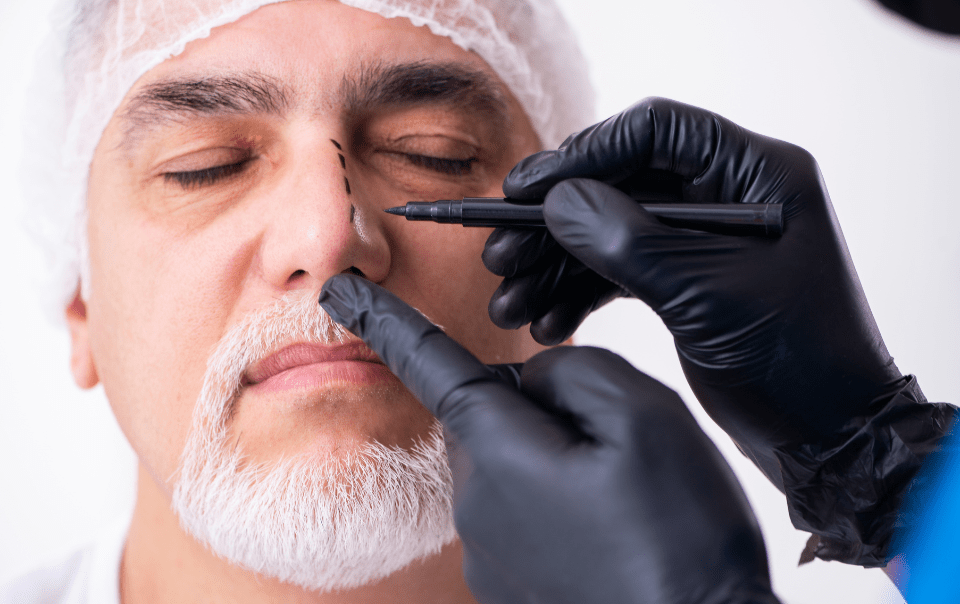Septoplasty in Los Angeles is a corrective nasal procedure aimed at addressing a deviated septum, which can cause congestion, breathing difficulties and other nasal issues. While the surgery itself is a step towards improved nasal function and overall well-being, understanding the recovery process is equally crucial. It’s important to note that recovery experiences can vary significantly from person to person, so while this guide provides a general overview, individual outcomes may differ.
Immediate Post-Operative Period
Right after the surgery, you will be taken to the recovery room where medical professionals will closely monitor your condition. This period is characterized by the emergence from anesthesia, during which you might experience mild pain, grogginess, and some bleeding. These effects are usually temporary and are managed by the medical team.
During the immediate post-operative period, it’s common to feel disoriented and experience mild pain or discomfort. The medical staff will closely monitor your vital signs as you wake up from the anesthesia. It’s normal to feel groggy or even slightly nauseous during this time. The bleeding is typically minimal and controlled, as your body begins the healing process.
The First 24 Hours
During the first 24 hours following septoplasty in Los Angeles, rest and elevation are paramount. Lying with your head elevated helps reduce swelling and discomfort. You might experience sensations of swelling, discomfort, and nasal congestion, which are normal parts of the healing process.
The first day after septoplasty is a critical time for your recovery. Rest is essential to allow your body to heal and adapt to the changes from the surgery. Keeping your head elevated, even while sleeping, can help reduce swelling and minimize discomfort. The sensation of swelling and nasal congestion is common as your body responds to the surgical intervention. It’s important to stay hydrated and avoid vigorous activities during this initial period.
Days 1-7: The First Week
In the initial week after surgery, you can anticipate varying levels of swelling and bruising. It’s common for nasal splints or packing to be in place to support the healing process. To aid proper healing, it’s crucial to avoid strenuous activities, nose blowing, and facial expressions that could strain the nose.
The first week marks a critical phase in your recovery journey. Swelling and bruising around the nose and eyes are normal and should gradually subside. Nasal splints or packing might be in place to maintain the corrected septum’s position and promote optimal healing. It’s important to adhere to your surgeon’s guidelines, which might include restrictions on physical activities and refraining from blowing your nose. Following these guidelines will aid in preventing complications and ensuring the best possible outcome.
Weeks 2-3: Mid-Recovery Phase
As you progress into the second and third weeks, there should be a gradual reduction in swelling and bruising. Depending on your individual healing speed, you might consider returning to non-strenuous work and social activities. However, it’s essential to continue following these precautions to protect your nose from trauma and to avoid heavy lifting.
The mid-recovery phase, spanning weeks two to three, often brings a noticeable reduction in swelling and bruising. Many individuals find that they can comfortably return to non-strenuous work and engage in social activities. However, it’s crucial to remain cautious and avoid situations that could put your healing nose at risk. Physical strain, heavy lifting, and accidental bumps should still be avoided to ensure the continued healing and proper alignment of the septum.
Weeks 4-6: Late Recovery Phase
By weeks four to six, the majority of internal and external healing is typically accomplished. You may feel comfortable resuming more vigorous activities, but with caution. Some individuals might experience lingering numbness or stiffness, which is part of the healing process and should resolve over time.
As you approach the late recovery phase, significant progress has been made in both internal and external healing. Many patients find themselves capable of participating in more vigorous activities, but it’s crucial to approach such activities with care. While your nose has made substantial strides in healing, it’s important to listen to your body and avoid any activities that could cause unnecessary strain or trauma. Some residual numbness or stiffness might be present, but this is a temporary phase that should improve as healing continues.
Long-term Healing: Beyond 6 Weeks

Your nose will continue to evolve as it settles into its corrected position. Minor shape changes can occur as your body’s healing processes finalize. Regular follow-up appointments with your surgeon are crucial during this phase to ensure that your recovery is progressing as expected and to address any questions or concerns that may arise.
Potential Complications and Warning Signs
While complications are rare, it’s crucial to recognize warning signs such as excessive bleeding, signs of infection, or severe pain. If you experience any of these symptoms, it’s important to contact your surgeon promptly. Your surgeon is your best resource for addressing any concerns during the recovery period.
Understanding the potential complications and being vigilant about recognizing warning signs is a crucial aspect of your recovery. While complications are infrequent, being aware of signs such as excessive bleeding, abnormal discharge, signs of infection (such as fever or increased pain), or severe pain that is not alleviated with prescribed medication is essential. If you experience any of these symptoms, it’s important to contact your surgeon promptly. Quick intervention can prevent potential complications from escalating and ensure a smoother recovery.
Tips for a Smooth Recovery
Several aids can facilitate a smoother recovery. Using humidifiers and saline sprays can help maintain proper nasal moisture levels. Ice packs can also help reduce swelling and provide relief. Proper nutrition and hydration contribute to your body’s healing capabilities. Additionally, consider adjusting your sleeping habits by keeping your head elevated and using supportive pillows to ensure comfort during rest.
Emotional and Psychological Considerations
The emotional and psychological aspects of recovery should not be overlooked. Temporary changes in your appearance due to swelling or bruising can be emotionally challenging. It’s important to remember that these changes are a natural part of the healing process and are temporary.
Being patient with yourself and focusing on the bigger picture – improved nasal function and overall well-being – can help you navigate through any emotional challenges that arise during your recovery. If you find yourself struggling with anxiety, impatience, or concerns about your appearance, consider reaching out to a support system, whether it’s friends, family, or a mental health professional.
Key Takeaways About Septoplasty in Los Angeles
To achieve optimal healing, it’s vital to adhere to your surgeon’s instructions throughout the recovery process. Patience and self-kindness are essential as your body heals at its own pace. While the recovery period might present some challenges, the end result is an improved quality of life with enhanced nasal function.
Remember that while general guidelines exist, individual experiences can vary, so it’s important to consult with your surgeon and prioritize self-care during this transformative period. By embracing the recovery process with patience and dedication, you’re taking the necessary steps toward a healthier, more functional nose and an improved overall well-being.
For more information about septoplasty and recovery, contact Dr. Alen N. Cohen at the Southern California Sinus Institute, a world-renowned in performing septoplasty in Los Angeles. Please contact us at (818) 798-9164 or schedule a consultation online.

